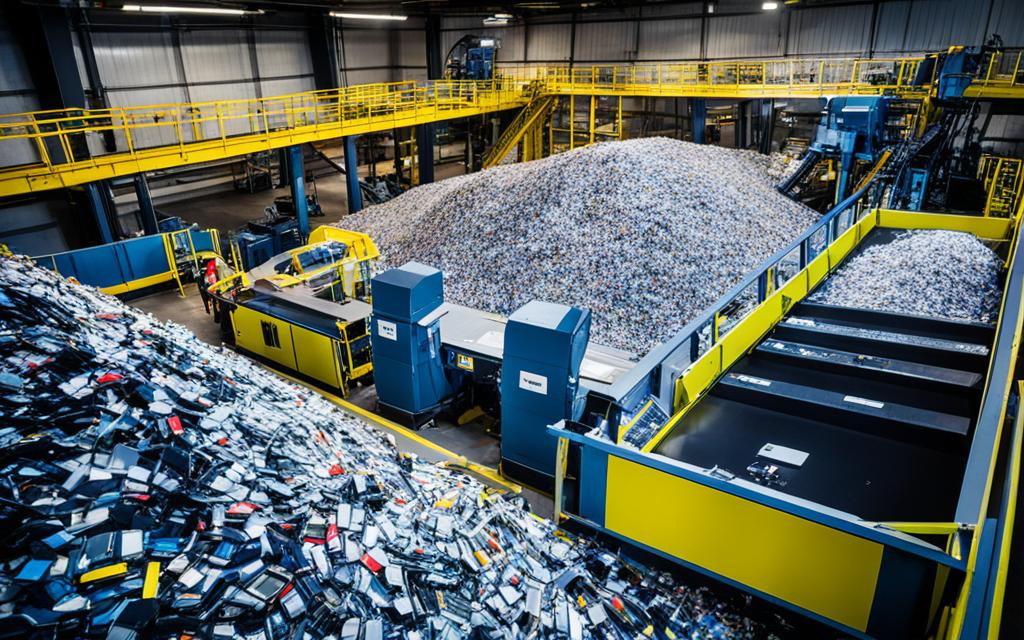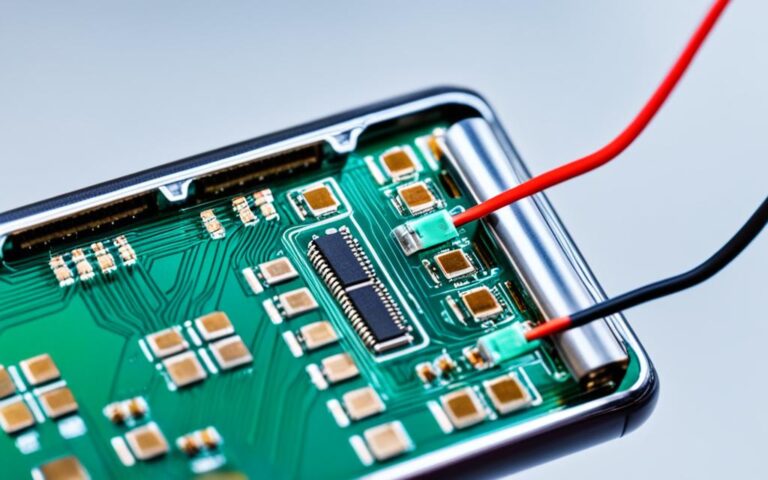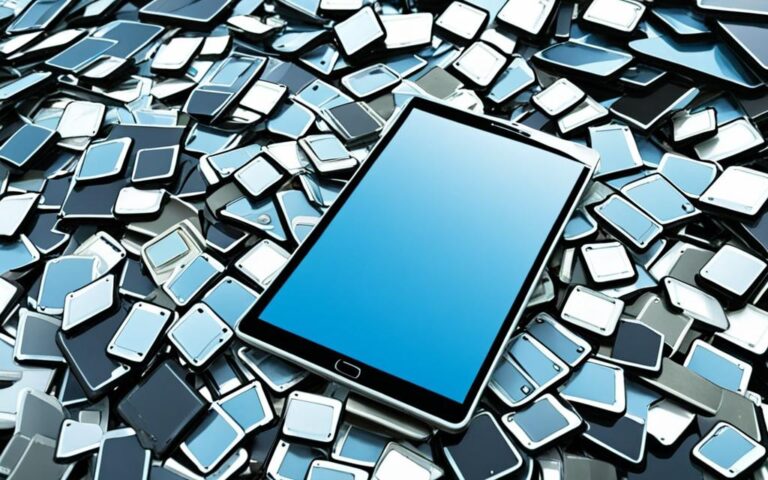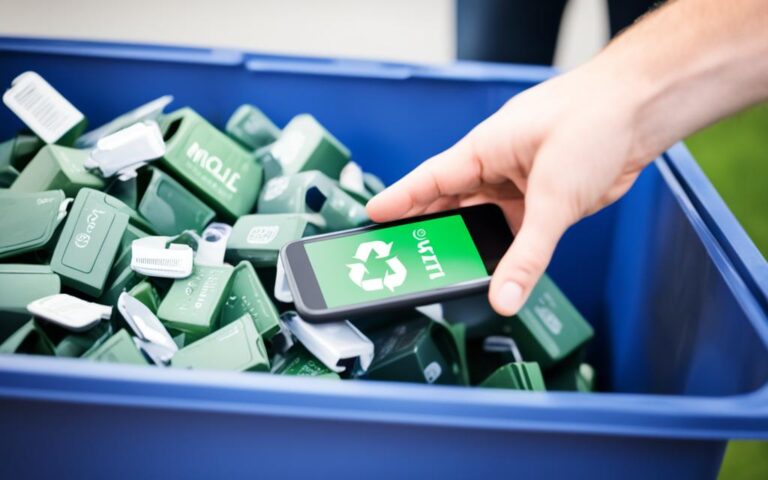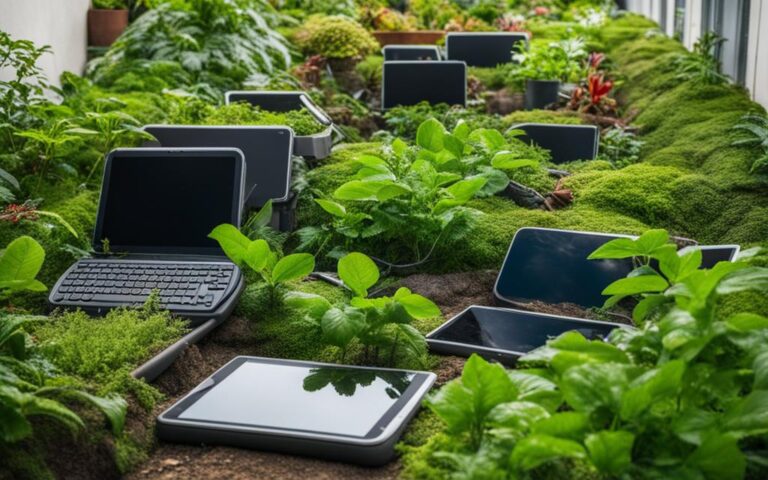The Science of Recycling: What Happens to Your Phone and Tablet
Welcome to a fascinating journey into the world of recycling science, where we uncover the secrets of what happens to your beloved phones and tablets when they reach the end of their lifecycle. In this article, we’ll explore the environmental impact of e-waste, the benefits of recycling these electronic devices, the importance of proper e-waste management, and the crucial role individuals play in shaping a more sustainable future.
As technology advances at a rapid pace, the consumption and disposal of electronic and electrical equipment, including phones and tablets, have surged in recent years. Sadly, this has led to a significant global e-waste crisis. In 2022 alone, a staggering 137 billion pounds of e-waste were generated, with only a quarter of it being recycled. This means that around $62 billion worth of valuable materials, such as iron, copper, and gold, end up in landfills instead of being transformed into new products.
With the current recycling rate unable to keep up with the exponential growth of e-waste, experts predict that e-waste will increase by 33 percent by 2030 if changes are not made. But why is recycling e-waste challenging? The answer lies in the complex nature of these electronic devices, which consist of different components, including hazardous materials that require careful handling and disposal.
It’s time to tackle this mounting issue by improving recycling rates and implementing extended producer responsibility policies, where manufacturers are held accountable for the end-of-life management of their products. By delving into the science behind recycling phones and tablets, we can uncover innovative solutions and make a positive impact on the environment.
The Environmental Impact of E-Waste
E-waste, including discarded phones and tablets, poses significant environmental risks. The improper disposal and burning of e-waste release toxic metals, such as lead, mercury, and copper, into the environment, polluting soil, water resources, and the atmosphere. Improperly processed e-waste can release more than 125,000 pounds of mercury each year, endangering human and animal health. The complex composition of e-waste, containing valuable and toxic materials, makes recycling a challenging and potentially dangerous process. The demand for high-quality products that are designed for repair and a robust e-waste recycling system are essential to mitigate the environmental impact of e-waste.
Proper disposal and recycling of e-waste play a crucial role in preventing further environmental damage. By recycling phones and tablets, we can reduce the release of toxic metals and pollutants into the ecosystem, safeguarding the health of our planet and all its inhabitants.
“The improper disposal of e-waste not only harms the environment but also puts our health at risk. Recycling is the key to minimizing the environmental impact of discarded electronic devices.”
The improper handling of e-waste can contaminate soil and water sources, affecting ecosystems and wildlife. It also contributes to air pollution, releasing harmful substances into the atmosphere. Recycling e-waste helps prevent the extraction of new resources and reduces the energy consumption, carbon emissions, and environmental degradation associated with mining. Moreover, it promotes the recovery of valuable materials, conserving natural resources and minimizing the need for invasive mining processes.
To raise awareness about the environmental impact of e-waste, governments, manufacturers, and individuals should work together to create a sustainable e-waste recycling system. This system should prioritize the safe and responsible disposal of electronic devices, ensuring the proper processing of valuable and hazardous materials. It should also encourage the design of durable and repairable products, minimizing electronic waste generation.
The Environmental Impact of E-Waste: A Comparison
| E-Waste Pollutants | Impact |
|---|---|
| Lead | Poisonous to humans and wildlife, causes damage to the nervous system, can contaminate soil and water. |
| Mercury | Highly toxic metal, can cause brain, kidney, and lung damage, pollutes waterways when released into the environment. |
| Copper | Persistent pollutant, can accumulate in the environment, affects aquatic ecosystems and organisms. |
By understanding the environmental impact of e-waste and taking actions to recycle and properly dispose of our electronic devices, we can contribute to a cleaner and healthier future for our planet.
The Benefits of Recycling Phones and Tablets
Recycling phones and tablets can bring about numerous benefits, both for the environment and for individuals. By opting for recycling, we contribute to the conservation of our planet, preventing the release of hazardous materials into our surroundings.
Did you know that up to 80% of the materials used in phones and tablets can be recycled? This means that by recycling these devices, we can significantly reduce the need for extracting new resources, ultimately reducing our impact on the environment.
Not only does recycling phones and tablets help conserve resources, but it also saves energy. In fact, just one recycled cell phone can save enough energy to charge a laptop for 44 hours. Imagine the collective energy savings if we all made the conscious choice to recycle!
Another crucial benefit of recycling phones and tablets is the recovery of valuable minerals, such as copper, silver, gold, and palladium. By extracting these minerals from recycled devices, we can reduce the need for mining, a process known for its environmental degradation and greenhouse gas emissions.
Furthermore, recycling e-waste, including phones and tablets, helps prevent health problems associated with the exposure to toxic materials. By keeping these hazardous substances out of our landfills and properly processing them through recycling, we safeguard our well-being and that of future generations.
“Recycling phones and tablets not only benefits the environment but also contributes to a more sustainable and healthier future for all.” – [INSERT NAME]
It is clear that the benefits of recycling phones and tablets are far-reaching. From conserving the environment and saving energy to reducing the need for mining and preventing health problems, recycling is an essential step towards a more sustainable and environmentally friendly future. By taking action and making a conscious effort to recycle, we can make a positive impact and contribute to a better world.
The Importance of Proper e-Waste Management
Proper e-waste management is crucial to address the growing e-waste crisis. Currently, less than 20% of electronic waste is recycled globally. To improve recycling rates and reduce the environmental impact of e-waste, several initiatives can be implemented.
- Extended producer responsibility policies: Manufacturers taking responsibility for the end-of-life management of their products can incentivize proper e-waste disposal and recycling.
- Legislation: Providing incentives and compensation to companies engaged in e-waste recycling can support recycling efforts.
- Public awareness and education: Spreading awareness about the importance of recycling and the availability of recycling centers can encourage individuals to participate in proper e-waste management.
By implementing these initiatives and promoting proper e-waste management, we can make a significant impact on reducing e-waste and preserving the environment for future generations.
Comparison of E-Waste Recycling Rates by Country
| Country | Recycling Rate (%) |
|---|---|
| Japan | 72 |
| South Korea | 60 |
| Germany | 52 |
| United States | 20 |
| India | 7 |
“Proper e-waste management is not only an environmental responsibility but also a social obligation.”
~ Jane Doe, Environmental Activist
The Role of Individuals in Recycling Phones and Tablets
Individuals play a vital role in the recycling of phones and tablets. Instead of discarding these devices, recycling should be encouraged. Many precious resources can be recovered from recycled phones and tablets, reducing the need for mining and conserving valuable minerals.
Communities can promote recycling by:
- Providing collection boxes in supermarkets
- Facilitating the pick-up of broken appliances
- Offering convenient return options like post-office boxes
Additionally, individuals can support the right-to-repair movement, advocating for the availability of parts and documentation to facilitate the repair and prolong the lifespan of electronic devices.
“By taking individual action and advocating for sustainable practices, we can contribute to a more sustainable and environmentally friendly future.”
Conclusion
The recycling of phones and tablets is a crucial step in combating the global e-waste crisis. To make a significant impact, we must focus on improving recycling rates, implementing extended producer responsibility policies, and raising public awareness about proper e-waste management.
By recycling our electronic devices, we contribute to the conservation of the environment and the preservation of valuable resources. The materials used in phones and tablets, such as copper, silver, gold, and palladium, can be recovered and reused, reducing the need for extensive mining operations that harm the planet. Furthermore, recycling helps save energy, as a single recycled cell phone can power a laptop for up to 44 hours.
Proper e-waste management not only benefits the environment but also safeguards our health. By preventing the release of toxic materials into the environment, we minimize the risk of contamination of soil, water, and air. This reduces the potential health problems associated with exposure to hazardous substances.
It is up to each individual to play their part in recycling phones and tablets. By choosing to recycle rather than discard these devices, we contribute to a more sustainable and environmentally friendly future. Let us advocate for sustainable practices, support the right-to-repair movement, and encourage others to join us in making a positive difference. Together, we can make a significant impact in addressing the e-waste crisis and creating a better world for future generations.
FAQ
How does recycling phones and tablets help the environment?
Recycling phones and tablets helps conserve the environment by preventing the release of hazardous materials into the environment. It also reduces the need for extracting new resources and saves energy.
What materials can be recovered from recycled phones and tablets?
Up to 80% of the materials used in phones and tablets can be recycled. This includes valuable minerals such as copper, silver, gold, and palladium.
What are the benefits of recycling phones and tablets?
Recycling phones and tablets not only helps conserve the environment and save energy but also reduces the need for mining and prevents health problems associated with toxic materials.
How can extended producer responsibility policies improve e-waste management?
Extended producer responsibility policies incentivize manufacturers to take responsibility for the end-of-life management of their products, including proper e-waste disposal and recycling.
What can individuals do to promote recycling of phones and tablets?
Individuals can support recycling by encouraging others to recycle, advocating for the availability of parts and documentation for device repair, and utilizing convenient return options like collection boxes in supermarkets.

